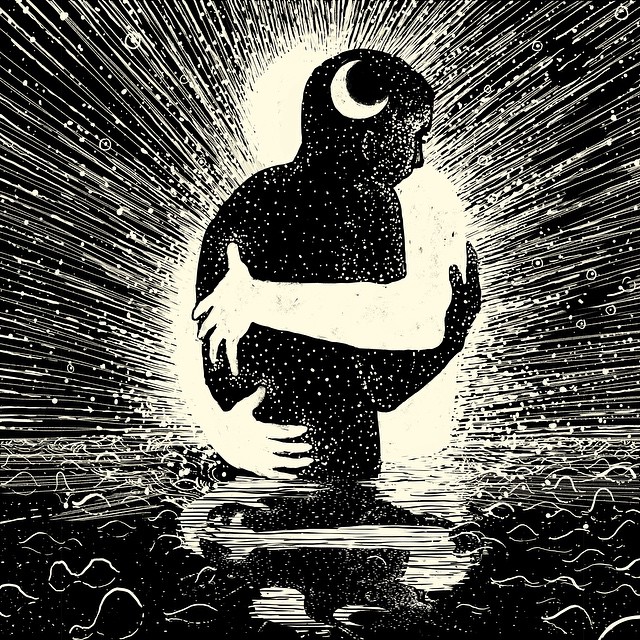Hugs, drugs, and dopamine: their potential, their neglect, and why we really, really need them
November 6, 2019
When was the last time you had a really good hug?
I don’t mean a one-armed, passing-period, drive-by hug or a quick laying-on of hands. I mean a really good hug–wrapping your arms around someone, feeling their warmth, feeling the oxytocin roaring through your system, deepening your bond and creating neural pathways of positive association with the person you’re hugging, neither of you letting go, eventually leaving the both of you there, hugging, long after civilization has fallen and vines have crept around your feet and ankles and you are reasonably certain that you have soul-melded with them–
No? That’s just me? Oh, well. Okay.
Hyperbole aside, hugs are an integral part of many relationships–platonic and romantic–and, in fact, necessary to maintain emotional fulfillment: chemical balance in the brain. When we hug, the touch activates pressure receptors in the skin that send signals to the vagus nerve. It’s connected to a network of nerve fibers that reach different cranial nerves which play integral roles in the regulation of heart rate and blood pressure. Not to mention the neurotransmitters (dopamine and oxytocin) that hugging releases, causing an increase in contentment, lowering stress, and providing tension relief, as well as fostering emotional connections and trust between the huggers. Both hormones are highly addictive, but in this case, it’s a good addition to have. Hugs are social bonders, help mental health, and, consequently, feel pretty amazing.
And the effects of hugs are immediate and drastic. Research done at the Advanced Telecommunications Research Institute International in Kyoto showed by a physiological evaluation that, after a 15-minute conversation between partners, participants who received a hug when the talk was over had decidedly lower levels of cortisol than participants who did not. Given that cortisol, a potent stress hormone has long-term effects including decreased immune function and eternal pain, it’s probably best to cut down on your yearly sick days by getting a few hugs.
Maybe more than a few. Virginia Satir, a psychologist, known widely as the “Mother of Family Therapy”, has famously said “We need four hugs a day for survival. We need eight hugs a day for maintenance. We need twelve hugs a day for growth.”
How do you stack up against this standard? If you do, good on ya. But the sad fact is that many don’t. And that’s a problem. A UK study has shown that half a million elderly people go at least five days every week never seeing or touching a single person. As the legislature and public concerns tighten around touching, society is becoming more and more touch-averse and more and more closed off. In some cases–prevention of inappropriate or unwelcomed touching, or with people who are touch-averse–this is just fine. In others, not so much.
So why, you may wonder, is this relevant to me? Surely I should just take hugs where I can get them, and not actively search for somebody to squeeze. Allow me, in that case, to persuade you. Teenagers are arguably the most stressed-out age demographic there is. School and tests and homework and drama, oh my, and sooner or later–probably sooner–you’re going to find yourself stressed out of your gourd and desperate for a vacation. According to the American Psychological Association’s August 2013 research, teens rate their stress at 5.8 out of ten during the school year, with 31% of teens feeling overwhelmed by stress, 30% reporting depression or sadness because of stress, and 36% having chronic tiredness. With teenage cortisol levels so high, hugs and contact are becoming ever more vital. Researchers at UCLA conducted a study in which participants’ brains were scanned while they underwent a stressful situation (receiving electric shocks, in this procedure). Participants had their partners with them during the experiment and, in some cases, were allowed to hold hands with them. The researchers found that the hand-holders had activated, by extrapolation, through contact, brain areas responsible for the mitigation of stress and fear. In these trying times of adolescence, it’s contact that relieves stress and gives us the power to keep going.
I, as well as, unfortunately, many people, have experienced the profound pain that comes with touch starvation. Staggering through your life, sitting down feeling lost and alone and unanchored, living in a state of emotional zombification–now, that’s no way to live. To hug is to feel less lonely and less lost in the world– an increasingly common phenomenon with the rise of social media. With the world as we see it unfolding and expanding, its power to open our worldview and perspectives grows. But it can also seem eerily large and ourselves–our lone, lonely, isolated little units are terrifyingly small. We are but specks in this massive, mighty universe, so indifferent to our petty problems and racing thoughts, and when someone gives us a hug, and we breathe in, breathe out and feel connected again. In the ever-changing world in which we live it, it’s more necessary than ever to open up, reach out, and bring it in.
So, the next time you see your friends, eschew the social aversion to touching. Hold them tight, eight times a day, for their health and happiness and yours. Together, as a generation, we can kick the stigma against touch, reduce our stress, and literally embrace the healing power of hugs.









Breana Knighten • Nov 18, 2019 at 1:43 pm
This was super insightful and now I will be more conscious of how many hugs I give per day.
Breana Knighten • Nov 18, 2019 at 1:41 pm
10/10 I love the vibes of this article.